Discover 15 hidden attractions, cool sights, and unusual things to do in Xi'an (China). Don't miss out on these must-see attractions: Drum Tower of Xi'an, Giant Wild Goose Pagoda, and Great Mosque of Xi'an. Also, be sure to include Stele Forest in your itinerary.
Below, you can find the list of the most amazing places you should visit in Xi'an (Shaanxi).
Table of Contents
Drum Tower of Xi'an
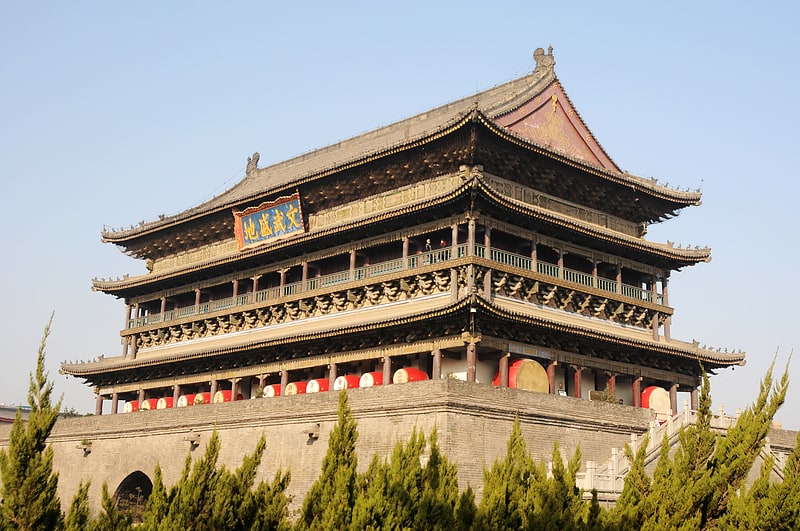
Also known as: 西安鼓楼
Tower in Xi'an, China. The Drum Tower of Xi'an, located in the heart of Xi'an, the capital of Shaanxi province, Northwestern China, along with the Bell Tower is a symbol of the city. Erected in 1380 during the early Ming Dynasty, it stands towering above the city center and offers incredible view of Xi'an.
The Drum Tower got its name from the huge drum located within the building. In contrast to the Bell Tower, where the bell was stricken at dawn, the drum was beaten at sunset to indicate the end of the day.
On the Drum Tower's first floor, lies a hall in which hang many large drums. Each is decorated with intrinsic and beautiful Chinese writing, which symbolises good fortune. The impressive arrays of drums are only on show and visitors are not allowed to touch any of them. But there is an extra drum near the front entrance where visitors can pose for pictures for a small fee.
Inside the Drum Tower there is also a drum museum, where a variety of drums are on display, some of which can be dated back thousands of years. There is a drum show performed here every day. The top of the tower commands a panoramic view of the city.[1]
Giant Wild Goose Pagoda
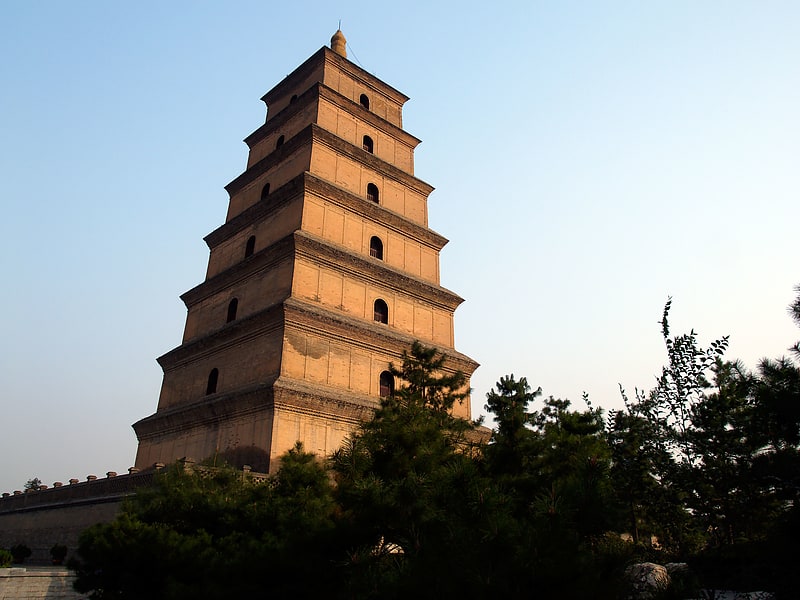
Also known as: 大雁塔
7th-century Buddhist landmark. Giant Wild Goose Pagoda or Big Wild Goose Pagoda, is a monumental Buddhist pagoda located in southern Xi'an, Shaanxi, China. It was built in 648/649 during the Tang dynasty and originally had five stories. It was rebuilt in 704 during the reign of Empress Wu Zetian and its exterior brick facade was renovated during the Ming dynasty.
One of the pagoda's many functions was to hold sutras and figurines of Gautama Buddha that were brought to China from India by the seventh-century Buddhist monk, scholar, traveller, and translator Xuanzang. Today, the interior walls of the pagoda feature engraved statues of Buddha by the renowned 7th-century artist Yan Liben.
This pagoda was added to the so-called World Heritage List, along with many other sites along the Silk Road, as part of the "Silk Roads: the Routes Network of Chang'an-Tianshan Corridor" site in 2014.[2]
Great Mosque of Xi'an
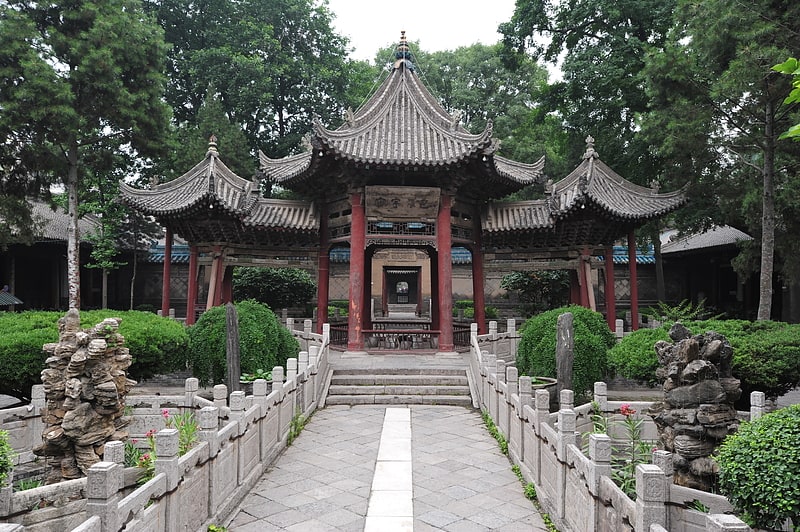
Also known as: 西安大清真寺
Expansive Tang dynasty mosque. The Great Mosque of Xi'an is one of the largest premodern mosques in China. Although the mosque was allegedly first built in the year 742 AD, its current form was largely constructed in 1384 AD during Emperor Hongwu's reign of the Ming dynasty, as recorded by the Records of Xi'an Municipality.
An active place of worship within Xi'an Muslim Quarter, this courtyard complex is also a popular tourist site. It now houses more than twenty buildings in its five courtyards, and covers 12 km² (4.63 mi²).[3]
Address: Huajue Alley, 710001 Xian Shi
Stele Forest
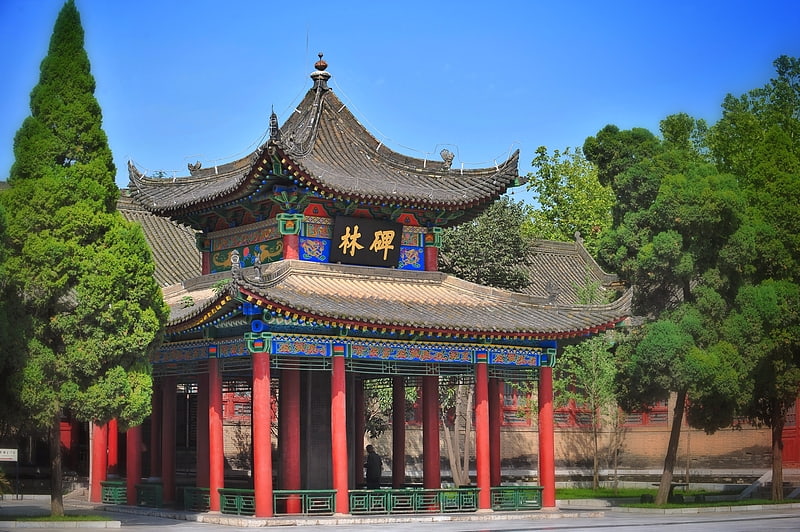
Also known as: 西安碑林
Museum for steles and stone sculptures. The Stele Forest or Beilin Museum is a museum for steles and stone sculptures in Beilin District in Xi'an, Northwest China. The museum, which is housed in a former Confucian Temple, has housed a growing collection of Steles since 1087. By 1944 it was the principal museum for Shaanxi province. Due to the large number of steles, it was officially renamed the Forest of Stone Steles in 1992. Altogether, there are 3,000 steles in the museum, which is divided into seven exhibitions halls, which mainly display works of Chinese calligraphy, painting and historical records.[4]
Small Wild Goose Pagoda
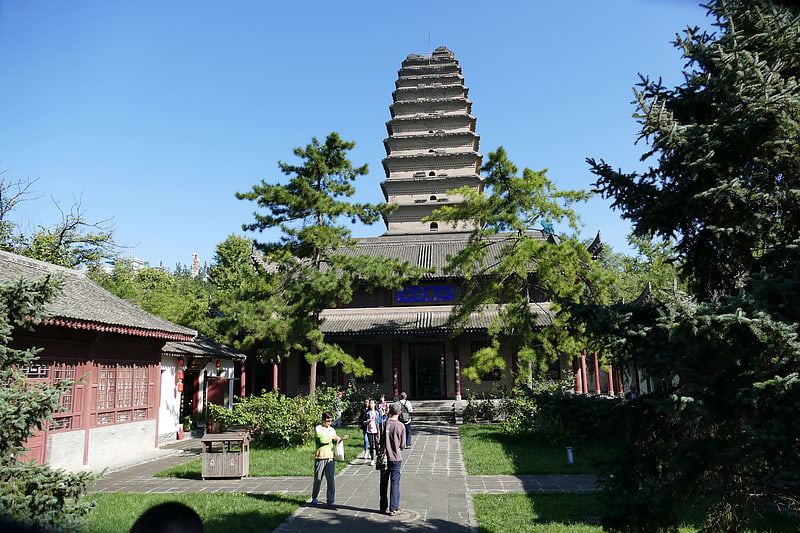
Also known as: 小雁塔
Ancient pagoda with surrounding park. The Small Wild Goose Pagoda, sometimes Little Wild Goose Pagoda, is one of two significant pagodas in Xi'an, Shaanxi, China, the site of the old Han and Tang capital Chang'an. The other notable pagoda is the Giant Wild Goose Pagoda, originally built in 652 and restored in 704. This pagoda, along with the Giant Wild Goose Pagoda and other sites along the Silk Road, was inscribed in 2014 on the UNESCO World Heritage List as the Silk Roads: the Routes Network of Chang'an-Tianshan Corridor World Heritage Site.[5]
Shaanxi History Museum
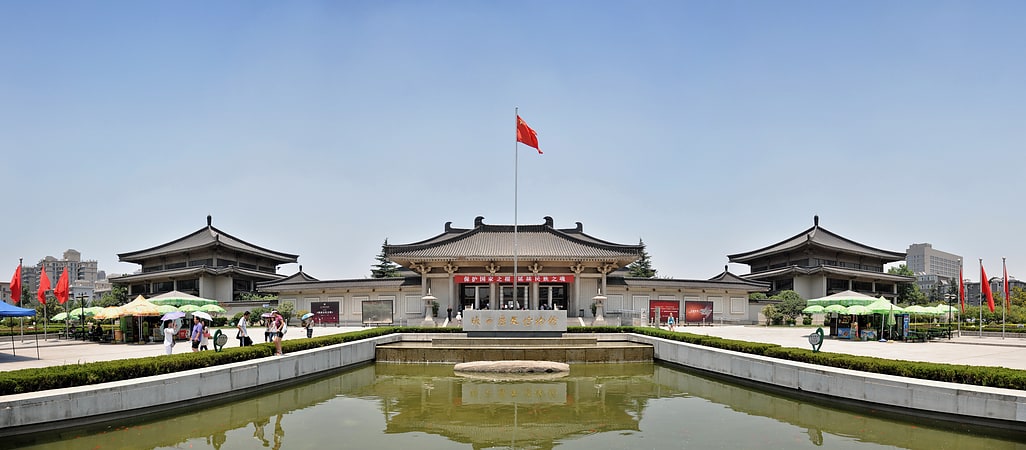
Also known as: 陕西历史博物馆
Vast collection of cultural artifacts. Shaanxi History Museum, which is located to the northwest of the Giant Wild Goose Pagoda in the ancient city Xi'an, in the Shaanxi province of China, is one of the first huge state museums with modern facilities in China and one of the largest. The museum houses over 370,000 items, including murals, paintings, pottery, coins, as well as bronze, gold, and silver objects. The modern museum was built between 1983 and 2001 and its appearance recalls the architectural style of the Tang Dynasty.[6]
Bell Tower
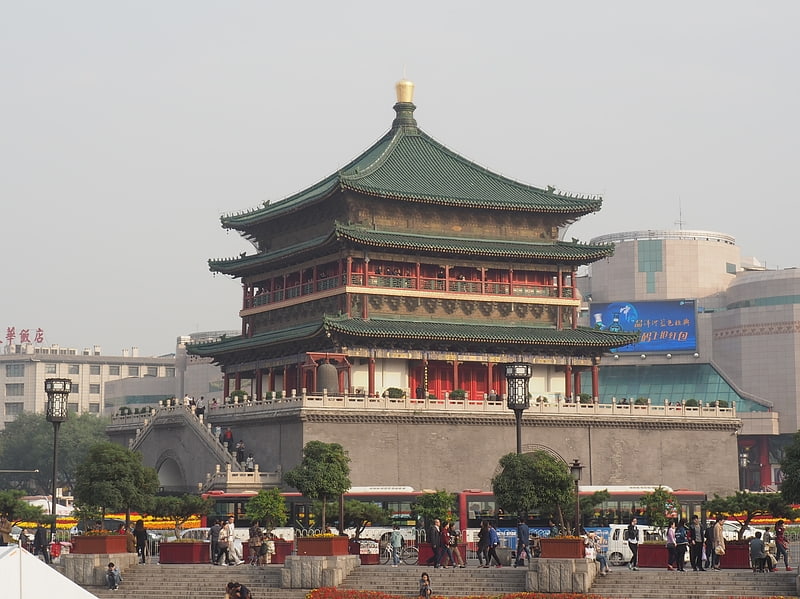
Also known as: 西安钟楼
Architectural landmark built in 1384. The Bell Tower of Xi'an, built in 1384 during the early Ming Dynasty, is a symbol of the city of Xi'an and one of the grandest of its kind in China. The Bell Tower also contains several large bronze-cast bells from the Tang Dynasty. The tower base is square and it covers an area of 1,377 m2. The tower is a brick and timber structure and close to 40 m high. It is located in the center of Xi'an, at the intersection of the four streets of the east, west, south and north. It is the largest and most preserved one amongst the many bell towers left over from ancient China.[7]
Daming Palace

Also known as: 大明宫
Heritage building in Xi'an, China. The Daming Palace was the imperial palace complex of the Tang dynasty, located in its capital Chang'an. It served as the imperial residence of the Tang emperors for more than 220 years. Today, it is designated as a national heritage site of China, and part of the UNESCO World Heritage Site "Silk Roads: the Routes Network of Chang'an-Tianshan Corridor". The area is located northeast of present-day Xi'an, Shaanxi Province.[8]
Banpo Museum
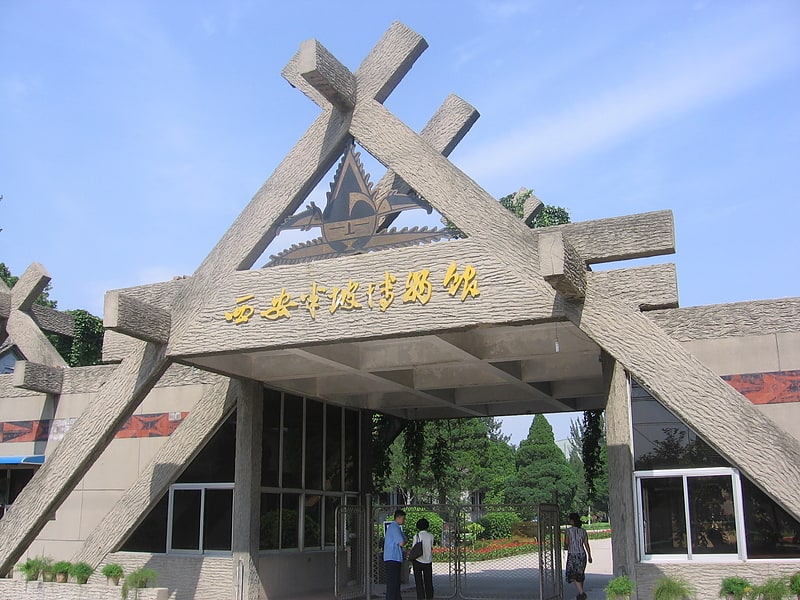
Museum in Xi'an, China. The Banpo Museum is a museum in Xi'an, Shaanxi, China. The museum houses artifacts from the archaeological site of Banpo. The museum gives access to the excavated buildings, has a collection of artifacts from the site, and also has several reconstructed houses designed to resemble the Neolithic settlement.
Buses run there from the Terracotta Army and from Xi'an.[9]
Address: North of Banpo Village, Baqiao District, 710038 Xi'an
Fortifications of Xi'an
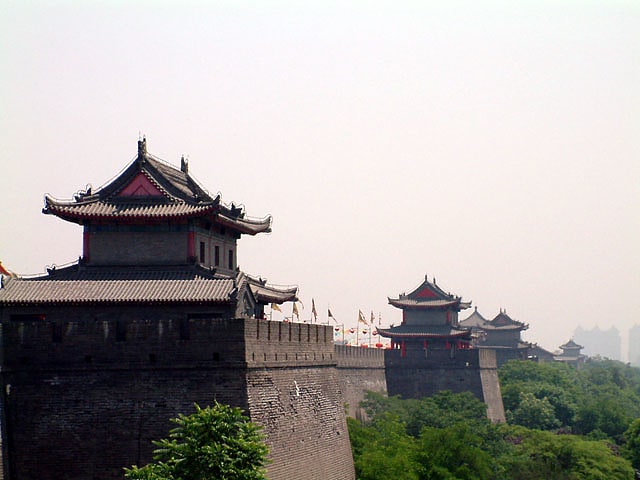
Also known as: 西安城墙
Monumental ancient walls with biking. The fortifications of Xi'an, also known as Xi'an City Wall, in Xi'an, represent one of the oldest, largest and best preserved Chinese city walls. It was built under the rule of the Hongwu Emperor Zhu Yuanzhang as a military defense system. It exhibits the "complete features of the rampart architecture of feudal society". It has been refurbished many times since it was built in the 14th century, thrice at intervals of about 200 years in the later half of the 1500s and 1700s, and in recent years in 1983. The wall encloses an area of about 14 square kilometres.
The Xi'an City Wall is on the tentative list of UNESCO's World Heritage Site under the title "City Walls of the Ming and Qing Dynasties". Since 2008, it is also on the list of the State Administration of Cultural Heritage of the People's Republic of China. Since March 1961, the Xi'an City Wall is a heritage National Historical and Cultural Unit.[10]
Weiyang Palace
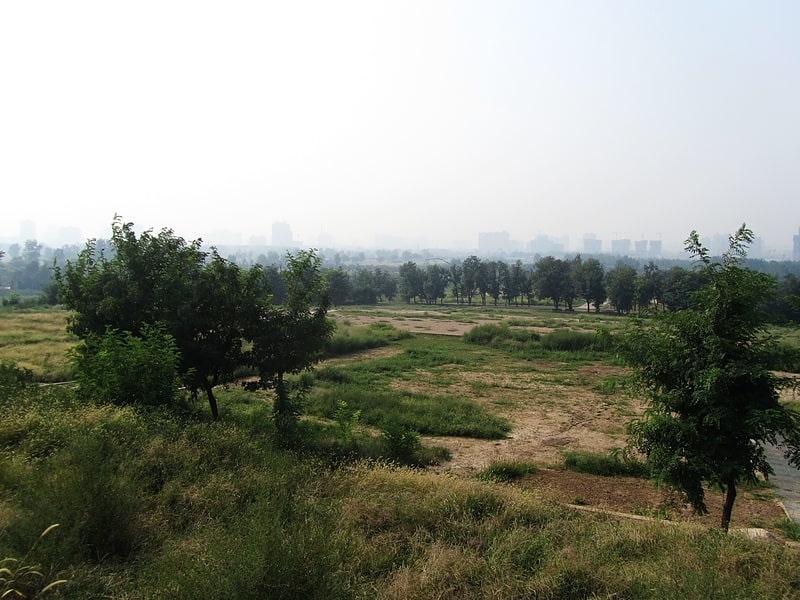
Also known as: 未央宫
Tourist attraction in Xi'an, China. The Weiyang Palace was the main imperial palace complex of the Han dynasty and numerous other Chinese dynasties, located in the city of Chang'an. It was built in 200 BC at the request of the Emperor Gaozu of Han, under the supervision of his prime minister Xiao He. It served as the administrative centre and imperial residence of the Western Han, the Xin dynasty, the Eastern Han, the Western Jin, the Han Zhao, the Former Qin, the Later Qin, the Western Wei, the Northern Zhou, and the early Sui dynasty.
The palace survived until the Tang dynasty when it was burned down by marauding invaders en route to the Tang capital Chang'an. This was the largest palace ever built on Earth, covering 4.8 km² (1,200 acres), which is 6.7 times the size of the current Forbidden City, or 11 times the size of the Vatican City. Today, little remains of the former palace. The site of the palace, along with many other sites along the eastern section of the Silk Road, was named a UNESCO World Heritage Site in 2014.[11]
Guangren Temple
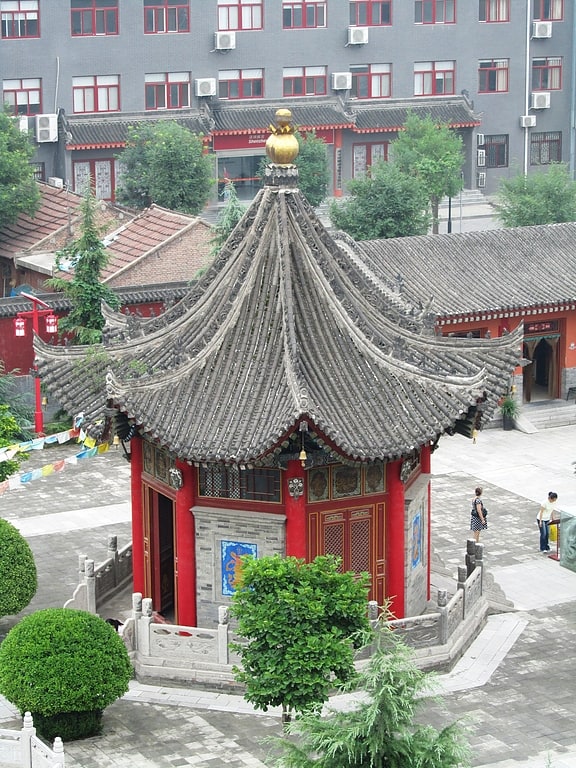
Temple in Xi'an, China. Guangren Temple, also called Guangren Lama Temple, is a Buddhist temple located in Lianhu District of Xi'an, Shaanxi, China. It is the only Tibetan Buddhist temple in Shaanxi.[12]
Tang Paradise
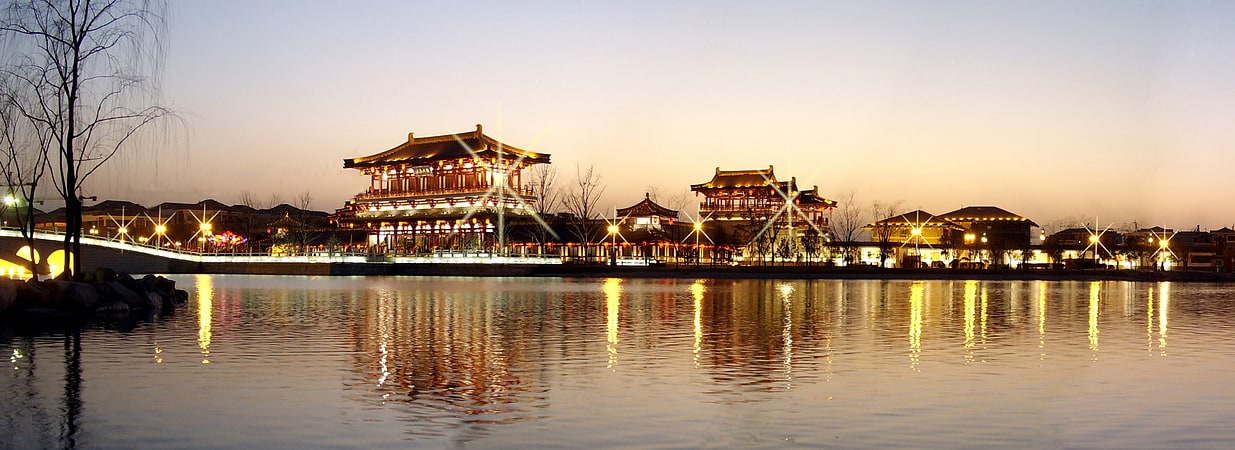
Also known as: 大唐芙蓉园
Tourist attraction in Xi'an, China. Tang Paradise is a large theme park in the city of Xi'an, the capital of Shaanxi province, Northwest China. The park is at or near the site of an earlier garden Furong Garden complex in the city of Chang'an, capital of Tang Dynasty, but consists almost entirely of modern construction.
The park features numerous buildings, squares, and gardens, all incorporating features of traditional Tang Chinese architecture, such as eaves and cornices. Some features are named after historical sites or buildings.
The park is one of several modern reconstructions of ancient sites in Shaanxi, which involve anachronistic styles and features, most notably the use of wide stretches of concrete surfaces.
The setting, a landscaped 165-acre (0.67 km2) site surrounding a willow-lined lake, captures something of the look and feel of classical Chinese landscape painting.
In the evening the many thousands of visitors are treated to a spectacular Lake Show, featuring Lasers, video projection onto water screens, fountains and other special effects. The show was created by a UK company - LCI Projects Ltd.[13]
Address: Qujiang Resort, Xi'an
St. Francis Cathedral
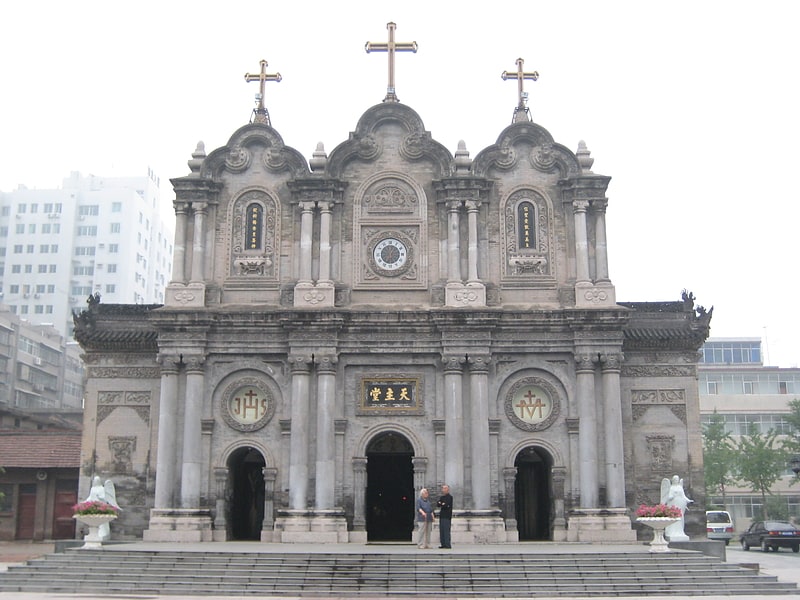
Also known as: 西安方济各主教座堂
Cathedral. St. Francis Cathedral is a Roman Catholic cathedral located in Xi'an, the capital of Shaanxi Province in China.
It was first constructed in 1716, expanded in 1884, closed in 1966 and reopened in 1980.
The grounds are currently the location for the Yellow River Charity. Founded in December 2005 it was the first soup kitchen for the homeless set up in China.[14]
Jianfu Temple
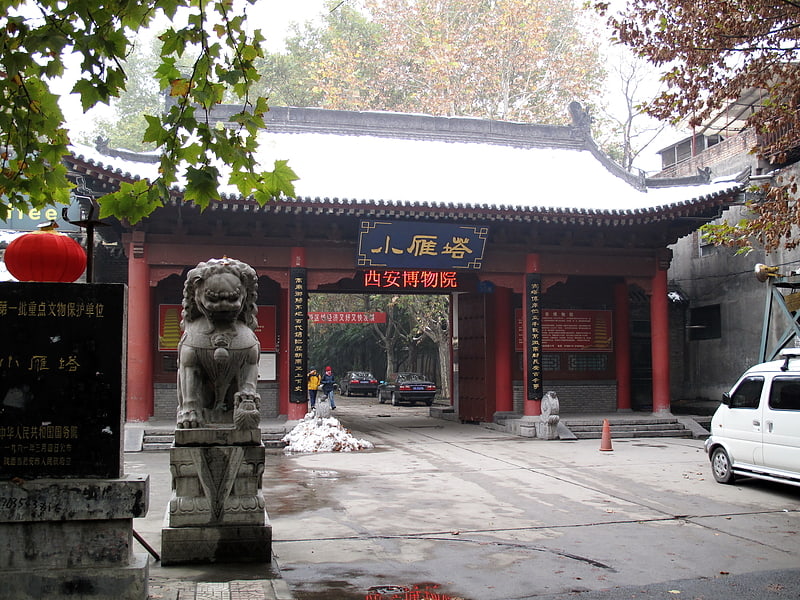
Also known as: 荐福寺
Temple in Xi'an, China. Jianfu Temple is a Chinese Buddhist temple located at West Youyi Rd. outside the south gate of Xi'an, Shaanxi Province, China. It hosts the famous Small Wild Goose Pagoda.[15]